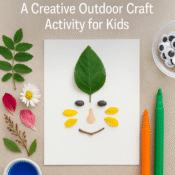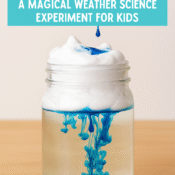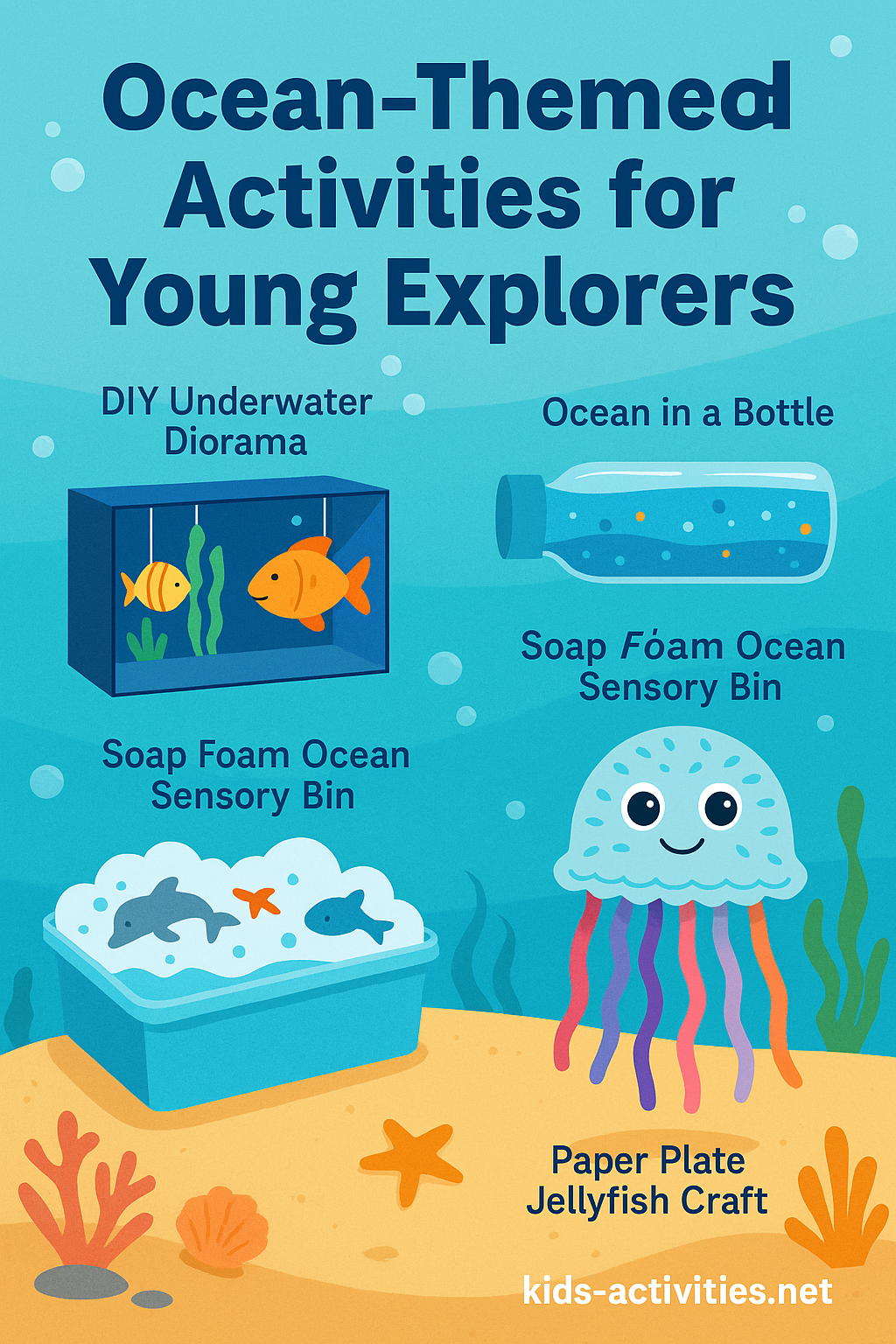
Ocean-Themed Activities for Young Explorers
Why Do Ocean Activities Matter for Kids?
It’s no secret that the ocean holds an endless sense of mystery and adventure. But for young children, ocean-themed activities do more than just entertain — they ignite curiosity, teach environmental awareness, and introduce basic marine biology. Whether your kids are fascinated by sharks or mesmerised by glowing jellyfish, crafting and exploring ocean concepts builds both creativity and scientific thinking.
Yet many parents ask:
“How can I teach my kids about the ocean without going to the beach?”
This guide brings the sea to your living room. With sensory crafts, science projects, and DIY ocean habitats, you’ll help children dive deep into learning — no snorkel required.
What Kids Learn from Ocean-Themed Play
Ocean exploration is more than just shells and sea creatures. These activities align with key learning areas:
- Environmental literacy – Understand ocean ecosystems and pollution
- Scientific reasoning – Explore concepts like buoyancy, camouflage, and ocean currents
- Sensory development – Engage through textures (slimy, sandy, soft)
- Creative expression – Design reefs, sea animals, and undersea scenes
- Social collaboration – Work on joint projects and storytelling with peers
This approach blends STEAM learning (Science, Technology, Engineering, Arts, Math) with hands-on fun.
Step-by-Step Ocean-Themed Activities
1. DIY Underwater Diorama
Create a shoebox ocean scene complete with fish, seaweed, and coral.
You’ll need:
- Shoebox or cardboard base
- Blue paint or paper for the background
- String, glue, scissors
- Printable sea animals (or draw your own)
- Sand, shells, tissue paper
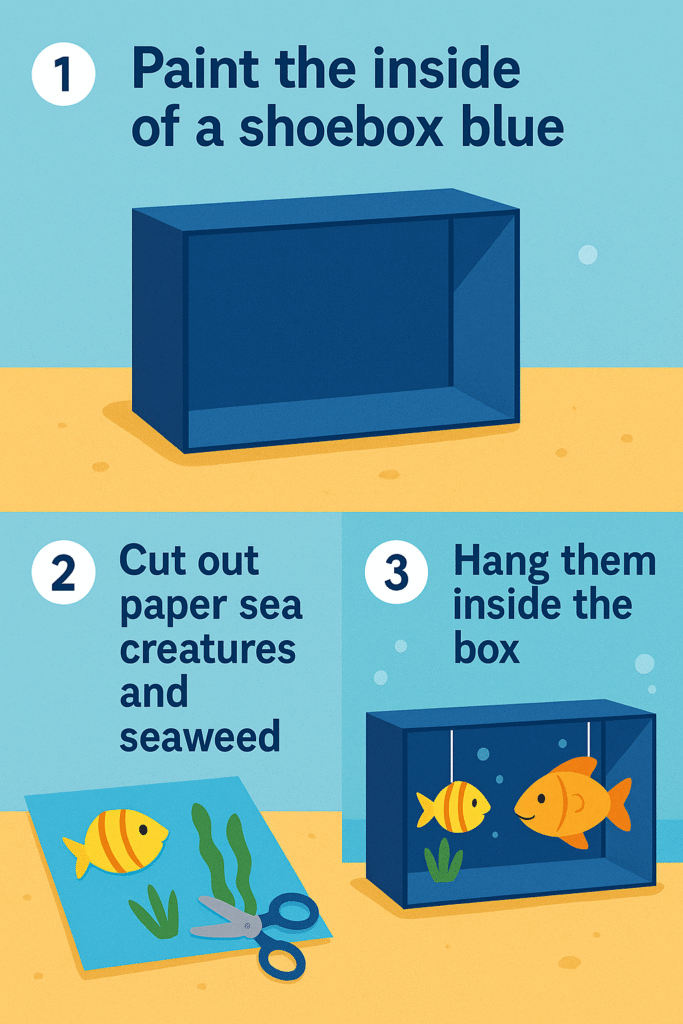
How to make it:
- Paint the inside of the box blue (sky and sea).
- Attach paper seaweed and fish using string so they “float”.
- Add sand and small shells for the ocean floor.
- Label each creature to teach ocean vocab.
2. Ocean in a Bottle – Density Science
Simulate ocean layers and currents with a simple science jar.
Materials:
- Clear plastic bottle
- Water and oil
- Blue food colouring
- Glitter or tiny fish beads
Steps:
- Fill the bottle halfway with water.
- Add blue food colouring and glitter.
- Fill the rest with oil and seal.
- Shake gently to see the “waves” and observe the layers.
This is a great entry into topics like density, immiscibility, and wave motion.
3. Soap Foam Ocean Sensory Bin
Perfect for toddlers and preschoolers to explore textures.
What you need:
- Large tray or container
- Dish soap + water + blue food colouring
- Hand mixer
- Plastic sea animals, shells, measuring cups
Instructions:
- Mix 2 tbsp dish soap + ¼ cup water + blue colour.
- Beat with a mixer until it forms stiff foam.
- Pour foam into the tray and add ocean toys.
Let kids squish, scoop, and rescue sea creatures from the bubbly surf!
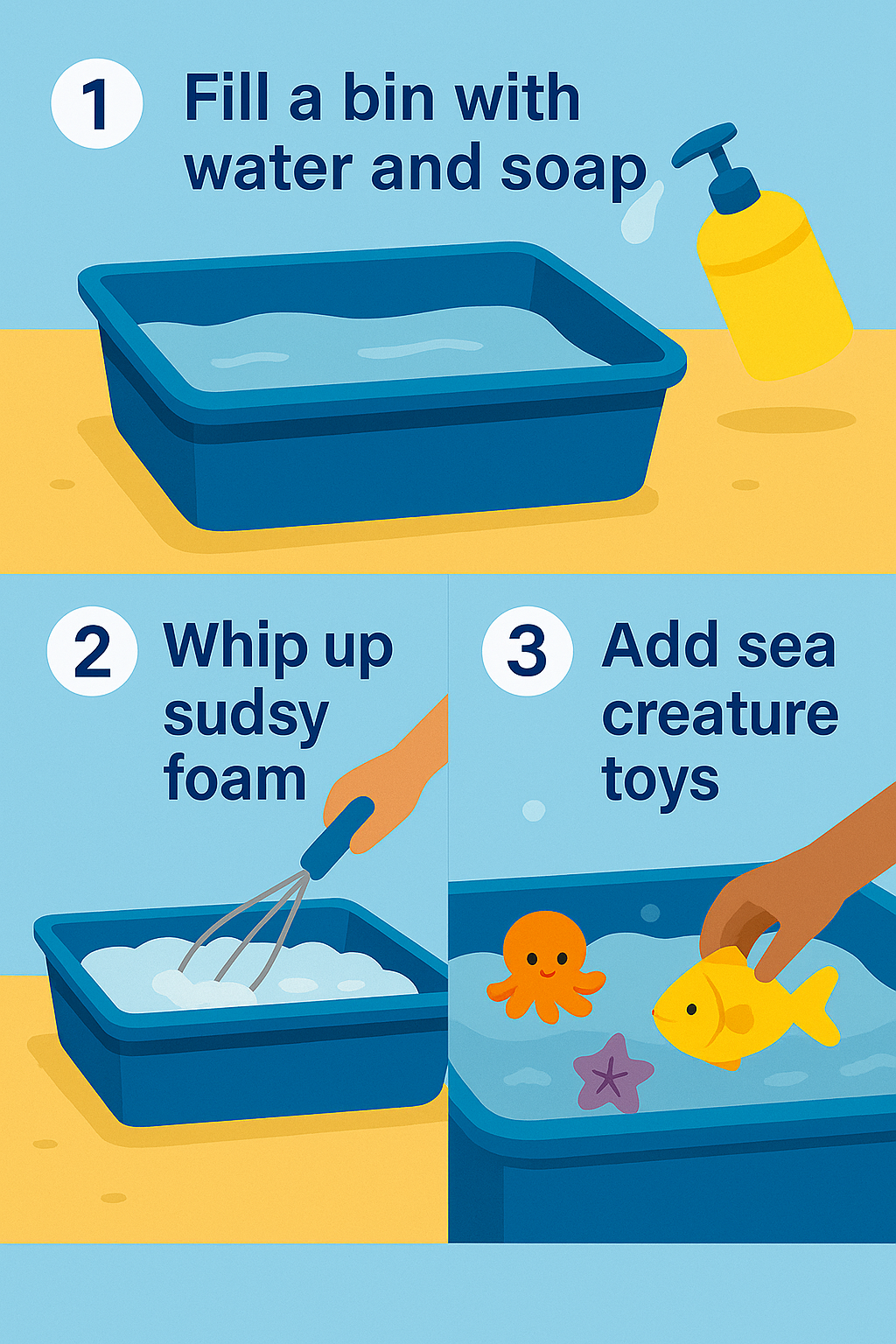
4. Seashell Classification Challenge
Turn a collection into a mini science lab.
Setup:
- 10–15 mixed seashells (or shell photos if you’re landlocked)
- Magnifying glass
- Chart with sorting categories (size, shape, colour, texture)
What to do:
- Kids examine each shell closely.
- Sort into groups using a DIY chart.
- Try drawing or naming each one — or research what animals they came from!
Internal link suggestion: Floating and Sinking Science Kit
5. Paper Plate Jellyfish Craft
A fun fine motor project for ages 4+.
You’ll need:
- Paper plates
- Hole punch
- String or yarn (various colours)
- Markers and googly eyes
How to:
- Decorate the plate with colourful designs and add eyes.
- Punch holes along the bottom and thread strings through to form tentacles.
- Hang them from windows or ceiling for ocean vibes.
Add movement by using crepe paper or streamers!
Bonus Quick Variants to Try
- Recycled Ocean Collage – Use plastic waste to create a pollution awareness poster
- Ocean Yoga Poses – Dolphin, octopus stretch, sea turtle flow
- Sea Story Stones – Paint rocks with sea creatures to spark storytelling
- Interactive Map – Pin where different sea animals live on a world map
- Glow-in-the-Dark Fish Tank – Use neon paint on a black box for deep sea scenes
Download: Ocean Explorer Activity Kit (Free PDF)
Includes:
- Printable fish and coral cut-outs
- Ocean vocabulary flashcards
- “Ocean Layers” mini poster
- Junior Marine Biologist certificate
- Easy activity planner checklist
Encourage email sign-up for access to this download
Internal link suggestion: Free Educational Printables
What Parents and Kids Are Saying
“My 6-year-old loved the jellyfish craft and now calls himself a sea scientist!” – Emma, WA
“The ocean bottle was a calming activity — we now use it like a sensory calm-down tool.” – Jon, VIC
Final Splash: Dive Into Learning
You don’t need a reef or a snorkel to start exploring the ocean. With these indoor-friendly activities, your child can investigate marine science, get creative, and build a sense of global responsibility — one jellyfish at a time.
Stay curious. Stay hands-on. And always ask — what’s beneath the surface?


